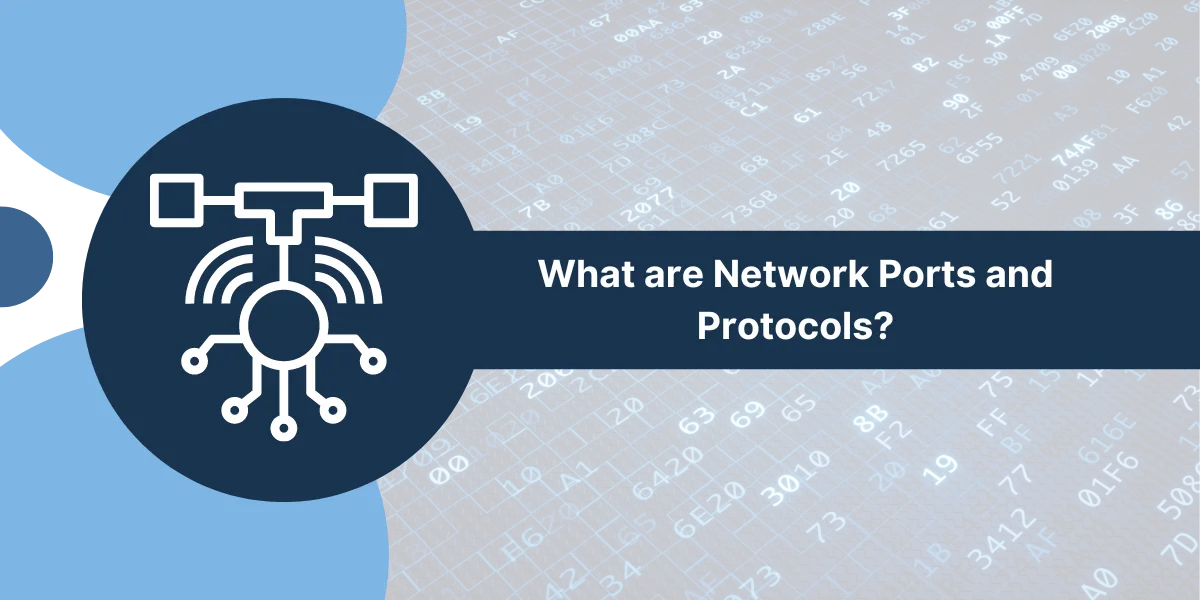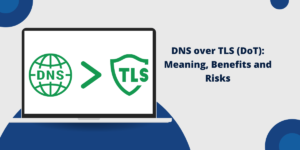Network Ports and Protocols Guide
Computer networks rely on a variety of ports and protocols for devices to communicate with each other. Each port is associated with a specific protocol that defines the rules for communication between devices. Understanding the common ports and protocols is crucial for network administration, troubleshooting connectivity issues, and improving security.
This comprehensive guide provides an overview of the most widely used network ports and protocols. It covers the basics of how ports and protocols work, the well-known and registered port numbers, and the primary purposes of the major protocols. Whether you’re a home user trying to set up a home network or a network engineer dealing with enterprise-scale networks, knowing ports and protocols is essential.
Key Takeaways
- Ports provide endpoints for communication between network devices and enable different network services.
- Protocols define a common set of rules and formats that devices must follow to understand each other.
- Common protocols include TCP and UDP for end-to-end communication, IP for logical addressing and routing, and ICMP for diagnostics and error reporting.
- Well-known port numbers allow standardization so any device can identify the service associated with a particular port.
- Understanding ports and protocols helps with troubleshooting connectivity issues, improving security, and overall network administration.
How Ports and Protocols Work
Communication over any network relies on protocols, which are the agreed-upon formats and rules that enable devices to exchange data. For two devices to communicate, they must utilize compatible protocols.
Port numbers enable protocols to be associated with specific services or applications. A port provides an endpoint for communication between network devices. Effective network management ensures that protocols and ports are properly configured, monitored, and secured, helping to maintain reliable and efficient communication. By standardizing well-known port numbers for common protocols, any device can quickly identify which service is associated with a particular port.
Some key things to know about ports and protocols:
- Ports are logical constructions representing a way to direct traffic to a specific service or application.
- A communication session over a network requires both ports and protocols to ensure successful data transfer.
- Ports allow multiple services and applications to utilize the same network hardware and operating system using different port numbers.
- Protocols define the format and rules for data exchange, such as how meaningful communication is initiated, maintained, and terminated.
- Associating specific port numbers with common protocols provides standardization across the industry.
Well-Known and Registered Ports
The Internet Assigned Numbers Authority (IANA) manages the official assignments of protocol port numbers. Ports 0 to 1023 are well-known and reserved for common protocols and standard services. These reserved ports can only be used by system processes or applications running as administrators.
Registered ports are numbered 1024 through 49151 and are assigned to protocol implementations and commercial or private services. Ports 49152 to 65535 are dynamic or private ports that can be used for temporary purposes like client-server communication.
Here are some of the most common, well-known, and registered port numbers and their associated protocols:
- Port 20, Port 21 – File Transfer Protocol (FTP)
- Port 22 – Secure Shell (SSH)
- Port 23 – Telnet
- Port 25 – Simple Mail Transfer Protocol (SMTP)
- Port 53 – Domain Name System (DNS)
- Port 67, Port 68 – Dynamic Host Configuration Protocol (DHCP)
- Port 80 – Hypertext Transfer Protocol (HTTP)
- Port 110 – Post Office Protocol v3 (POP3)
- Port 119 – Network News Transfer Protocol (NNTP)
- Port 123 – Network Time Protocol (NTP)
- Port 143 – Internet Message Access Protocol (IMAP)
- Port 161, Port 162 – Simple Network Management Protocol (SNMP)
- Port 443 – HTTP Secure (HTTPS)
TCP and UDP Ports
TCP (Transmission Control Protocol) and UDP (User Datagram Protocol) are two of the core protocols that allow hosts to communicate over an IP network. They use port numbers to direct traffic to the correct application or service.
- TCP enables reliable communication with error checking and guaranteed packet delivery. Web traffic, email, and file transfers rely on TCP.
- UDP offers quick transmission without error checking and is often used for video streaming, voice traffic, and broadcasting.
Here are some key differences:
TCP
- Establishes a connection between hosts and maintains it during data transfer.
- Ensures packets are delivered and received in the correct order.
- Retransmits lost packets.
- Provides flow control and congestion control.
- Adds overhead like packet headers for reliability.
UDP
- No overhead for establishing connections prior to sending data.
- No guarantee that packets are delivered or received in order.
- Packets lost in transit need to be recovered or retransmitted.
- Faster transmission speeds but less reliable.
- Used for time-sensitive applications like video chat where some data loss is acceptable.
IP Protocol and ICMP
The Internet Protocol (IP) is the primary protocol that defines how data packets are logically transmitted and routed over the Internet. It handles addressing, routing, and fragmentation of packets. The IP protocol utilizes port numbers to direct traffic to the appropriate transport protocol like TCP or UDP.
Internet Control Message Protocol (ICMP) works in conjunction with IP by enabling diagnostics and reporting errors or problems back to the sending device. For example, ICMP handles Ping requests to verify connectivity and returns error messages when destination hosts are unreachable. Uptime monitoring tools such as PingBot use it to send ping requests, monitor server availability and alert users to any outages.
Some key points about IP and ICMP:
- IP provides logical addressing for hosts using IP addresses like 192.168.1.10.
- IP is a connectionless protocol, so no handshaking is required before transmitting data.
- ICMP messages report issues back to the packet’s source IP address if errors occur during transmission.
- Common ICMP message types include Destination Unreachable, Time Exceeded, Parameter Problem, Source Quench, Redirect, Echo Request/Reply, and Router Advertisement.
- Monitoring ICMP traffic can identify network issues before they cause major outages.
HTTP, HTTPS, and Web Ports
Hypertext Transfer Protocol (HTTP) is the protocol used for web traffic and operates over TCP. HTTP uses port 80 by default to deliver web pages, images, documents, and other content over the Internet. Because HTTP transmits data as plaintext, HTTPS (HTTP Secure) was developed to encrypt and secure web traffic.
HTTPS uses Transport Layer Security (TLS) and requires an SSL/TLS certificate to enable data encryption. By default, HTTPS uses TCP port 443 for secure web traffic. Other common web ports include:
- TCP 8080 – Common alternative port for HTTP
- TCP 8443 – Alternative port for HTTPS
- TCP 8090, 8000, 8001 – Used by web proxy servers
- TCP 554 – Real Time Streaming Protocol (RTSP) for streaming media
Email Protocols and Ports
Simple Mail Transfer Protocol (SMTP), Post Office Protocol (POP3), and Internet Message Access Protocol (IMAP) are three key protocols that define how email communication works over TCP/IP networks. Each protocol uses specific ports that email clients and servers must utilize to transmit, receive, and store email messages.
- SMTP uses TCP port 25 for routing and delivering email from clients to mail servers.
- POP3 uses TCP port 110 to allow clients to retrieve email from mail servers and download messages locally.
- IMAP uses TCP port 143 for accessing email on mail servers without having to download messages to the client device.
- Other email ports – SMTP over SSL (TCP 465), POP3 over SSL (TCP 995), IMAP over SSL (TCP 993).
File Transfer Ports and Protocols
File Transfer Protocol (FTP) and Trivial File Transfer Protocol (TFTP) enable transferring files between hosts over TCP/IP networks. FTP uses TCP ports 20 and 21 for standard transmissions. For secure FTP connections, ports 989 and 990 are used. TFTP utilizes UDP port 69 for faster file transfers with no authentication.
Other common file transfer ports include:
- TCP 139, 445 – Server Message Block (SMB) for Windows file sharing
- TCP 2049 – Network File System (NFS)
Database and Share Ports
Database management systems like MySQL and MongoDB require specific ports to provide database access across a network. For example, MySQL uses TCP port 3306 by default. Share directories rely on Server Message Block (SMB), which uses TCP ports 139 and 445.
Remote Access and Administration
Secure Shell (SSH), Telnet, and RDP (Remote Desktop Protocol) allow remote command line access, terminal emulation, and managing devices graphically over a network. Common ports include:
- TCP 22 – SSH
- TCP 23 – Telnet
- TCP 3389 – RDP
VoIP/Video Chat Applications
Voice over IP (VoIP) apps like Skype and video chat programs such as Zoom, Webex, and Microsoft Teams allow real-time communication using a mix of proprietary protocols and standards like SIP, SRTP, and RTP. These applications use random TCP and UDP ports for optimal performance.
Gaming Ports
Online multiplayer games have specific port requirements for hosting game sessions and enabling real-time player interactions. For example:
- UDP 27000 to 27015 – Steam client
- TCP 28960 – Call of Duty
- UDP 3659 – World of Warcraft
Troubleshooting Using Ports and Protocols
Understanding ports and protocols enables effective troubleshooting of network issues and outages. Some techniques include:
- Reviewing port usage to identify applications failing or using incorrect ports.
- Checking for ports blocked by firewalls mistakenly.
- Verifying ICMP traffic for diagnostic messages indicating device unreachable errors or echo request failures.
- Using protocol analyzers and packet capture tools to inspect traffic flows between hosts.
- Checking server logs for crashed services tied to particular ports.
- Comparing port and protocol configurations on faulty versus working devices.
Security Using Ports and Protocols
The port and protocol landscape also represents a potential attack surface for cyber threats. Security measures involve:
- Disabling or blocking unnecessary ports.
- Avoiding default ports for admin interfaces like SSH or RDP.
- Restricting access to ports only from specific IP addresses or subnets.
- Scanning ports regularly to identify open, unmonitored ports.
- Staying updated on protocol and port-related vulnerabilities.
- Encrypting cleartext protocols using SSL/TLS or a VPN tunnel.
Final Thoughts
Ports and protocols serve critical roles in enabling communication between networked devices. Providing standardized endpoints for traffic and universally accepted data transmission rules, ports, and protocols enables the reliable exchange of data using everything from web traffic and email to file transfers and remote administration.
Understanding the common ports and protocols and how they can be leveraged in troubleshooting and security is an important skill for any IT professional. Whether setting up a basic home network or managing an expansive enterprise environment, having a working knowledge of ports and protocols is essential.
Frequently Asked Questions (FAQs) About Network Ports and Protocols
What is the main difference between TCP and UDP protocols?
TCP provides reliable communication by establishing a connection, sequencing packets, and retransmitting lost data. UDP offers faster transmission speeds but does not guarantee packet delivery or order. TCP ensures accurate data transfer, while UDP is used for time-sensitive applications where some packet loss is acceptable.
How many total ports are available in TCP and UDP?
There are 65,535 potential ports available for each TCP and UDP on every system. However, only ports 0 to 1023 are reserved as well-known ports. Ports 1024 to 49151 are registered ports and 49152 to 65535 are dynamic/private ports.
What are the most common web ports?
The most common web ports are TCP 80 for HTTP traffic, TCP 443 for HTTPS encrypted traffic, TCP 8080 as an alternative HTTP port, and TCP 8443 as an alternative HTTPS port. Other web-related ports include TCP 554 for RTSP media streaming and TCP 8000/8001, which are sometimes used by web proxy servers.
Which protocols do email clients use to access email?
The primary protocols that email clients use to send and receive emails are SMTP, POP3, and IMAP. SMTP uses port 25 to route and deliver mail to mail servers. POP3 uses port 110 to download messages from the server. IMAP uses port 143 to interact with messages on the server without downloading them.
What port does Ping use?
Ping utilizes the ICMP protocol rather than a specific port. It sends ICMP Echo Request messages to a target host and waits for an ICMP Echo Reply. This allows Ping to verify basic network connectivity between devices.
How does TCP ensure reliable communication compared to UDP?
TCP establishes a three-way handshake to set up a connection, sequences packets, waits for acknowledgment from the receiver, and retransmits lost packets. This provides reliable and ordered data transfer. UDP has no handshake, packet numbering, or error checking, trading reliability for faster speeds useful for things like video streaming.
How can understanding ports and protocols improve network security?
Knowing port and protocol usage allows for disabling unnecessary services, avoiding default admin ports like RDP 3389, restricting access to only trusted IP addresses, encrypting cleartext protocols like HTTP, and keeping systems patched against protocol-based vulnerabilities. Ports and protocols represent a significant part of the attack surface that must be secured.

Priya Mervana
 Verified Web Security Experts
Verified Web Security Experts
Priya Mervana is working at SSLInsights.com as a web security expert with over 10 years of experience writing about encryption, SSL certificates, and online privacy. She aims to make complex security topics easily understandable for everyday internet users.



